What is Company Culture in 2024? New Secrets & More
Company culture is more prominent of a topic than ever. When you interview a job applicant, they’re likely to ask you to describe your workplace culture. With more people working remotely than ever before, and more collaboration tools widely available, company culture has become incredibly important.
But first, let’s breakdown what we’re talking about exactly and give our company culture definition:
Company culture is the makeup, character, and personality of your workplace pertaining to the standard of how employees interact with each other, work with each other, and how management works with employees.
It includes a variety of specific factors such as assumptions, values, and beliefs. Organizational culture already exists when employees arrive at a company, so it isn’t something they bring with them, but they can impact it. Even a company with no employees still has a culture. In these cases, the company’s values and beliefs come from the sole proprietor.

What is Company Culture? At GaggleAMP, it's a serious business.
Here’s a peek at the values that drive our culture here at GaggleAMP.
While employees don’t provide a company culture definition by themselves, organizations do tend to attract and retain individuals who are the best fit for that culture. However, technological and social changes are driving organizations to grow in unexpected ways, requiring many of them to transition to a new organizational culture. This process is typically a gradual one since human beliefs and values can be difficult to change.
A Brief Timeline of How We Got Here
Most businesses fail to fully develop a long-term plan for company culture. This is largely because it requires a high degree of confidence in the company’s survival. This is for a slew of reasons including that it’s often ignored, or just not made a priority. However, a new organization that focuses on early growth should occasionally step back from its strategy of frequent hiring to determine what is company culture is for them, and how they could improve it.
A formal company culture audit can answer the question, “What is your company culture?”, but it’s typically easier and cheaper to simply look around your company. This informal audit should attempt to determine how your employees act when they’re working and if they exhibit any unusual common behaviors, whether they’re good or bad. It’s also important to learn what their job means to them and what it would take to make them seek employment elsewhere.
What is company culture? And what does it mean to you? Answering these questions will indicate whether your organizational culture is healthy or not. Bear in mind that company culture begins developing before the first employee is hired. Knowing how employees will react to the vision you’re shaping is vital to your company’s long-term success. Each employee will impact your workplace culture in different ways.
What Makes Up a Company’s Culture Today
A company’s culture is like an individual’s personality, which includes factors such as beliefs, values, experiences, and underlying assumptions. These factors create a person’s behavior, just as they account for the behavior of people in a group.
When coming up with your company culture definition, keep in mind that culture is typically based on unspoken and unwritten rules. So, what is company culture as it pertains to you? This is decided by you, your upper management, and the people they hire. By keeping your aspirations for your workplace culture in mind during the hiring and onboarding process, you’ll keep your vision afloat.
Values & Beliefs
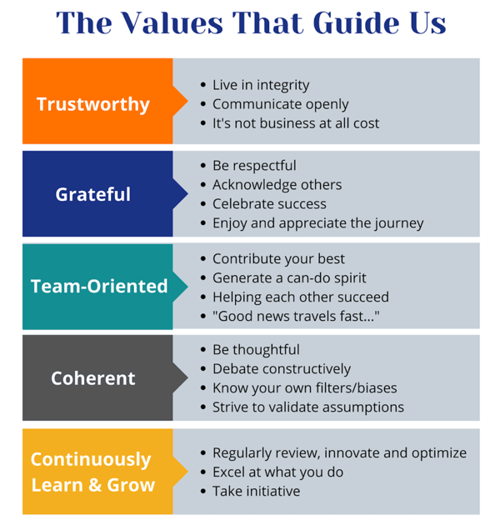 The Values and Beliefs at GaggleAMP
The Values and Beliefs at GaggleAMP
Corporate culture is at least partially determined by individual life experiences, although they aren’t necessarily a dominant factor. However, the values and beliefs of individuals in key roles such as executives and managers have a greater impact on what defines company culture than those of employees in non-supervisory positions. Middle managers also have a great potential for answering the question, “Why is culture important?” since they have direct contact with employees, allowing them to receive information about their behavior.
What’s Underneath
The general attitudes, assumptions, and behaviors that an organization’s members display each day should be easily noticeable to anyone who walks through work areas attend meetings or uses break rooms. Corporate culture surrounds its members with forms of communication such as bulletin boards, newsletters, and meetings. Even seemingly trivial issues such as the personal items, workers place on their desks can provide a good deal of information about how employees view their workplace culture and participate in it.
How Company Culture is Changing
Most organizations place a high priority on improving corporate culture on an ongoing basis. This task is often challenging because culture can change on a daily basis, especially in a young company. Furthermore, societal changes also hinder an organization’s leaders from connecting with its newest workers.
A failure to develop the right workplace culture can also cause an organization to spend resources on initiatives that have little impact on the experience of its employees. Research from the 2020 Global Culture Report provides the latest insight into the question “Why is culture important?”
Everyday Experiences and Milestones
Companies often attempt to answer the question, “What is company culture?” by developing programs that focus on their key milestones, including leadership development, onboarding, and retirement. This strategy means that employees must wait until reaching one of these milestones before having a meaningful interaction with their leaders. When they do experience such interaction, it tends to be a generic, top-down monologue that means little to the employee.
In practice, an employee's experience is primarily comprised of their everyday experiences rather than the occasional meeting with a manager. For example, we now have more methods of communication than ever before, which brings even new ways to deliver everyday messages and experiences.
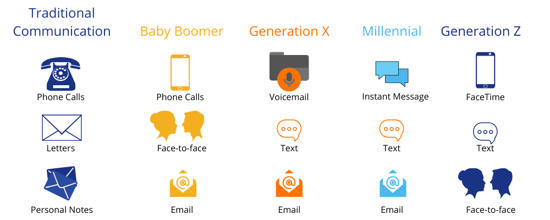
The conversations, interactions, and observations that employees make each day are the main contributing factors for answering the question, “What is your company culture?”
A positive everyday experience at work is often more likely to make an employee feel good about their company and its leadership. Organizations can take advantage of this tendency by working to improve their daily lives and meeting communications where the employee is most comfortable. This can include more frequent interactions with their leaders, but it can also include other things like face-to-face quarterly meetings for the remote work staff or using technology like Zoom to conduct video calls over audio-only calls.
Great Moments Outweigh Bad Moments
Many people believe that negative experiences stand out more in a person's memory than positive experiences. However, the results of the 2020 Global Culture Report show otherwise. The most positive and negative experiences, also known respectively as peak and valley experiences, evoke stronger emotions than ordinary experiences. They also last longer and are more likely to influence the perspective of employees on their work life.
Organizations can answer the question, “What is company culture?” by focusing on creating more peak experiences rather than trying to mitigate valley experiences. For example, leaders should create more moments of formal recognition and mentorship rather than trying to improve the challenges of obtaining a promotion or raise. This practice is not only easier than the more common practice of trying to improve valley experiences, but it should also have a greater impact on the overall experience of employees.
Watch for Employee Burnout
Most people associate employee burnout most closely with traditional high-pressure jobs like healthcare and legal professions. However, the World Health Organization (WHO) now considers burnout to be a condition that can affect any worker. Burnout is an increasingly common problem for workers in all sectors, often as a result of the internal culture of a company.
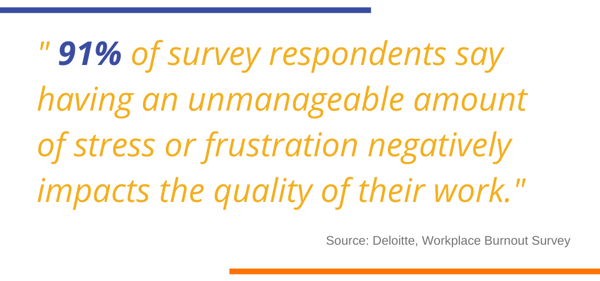
According to Deloitte’s Workplace Burnout Survey, the biggest driver of employee burnout is the lack of support or recognition from leadership. Organizations can reduce the burnout rate of their employees by building a strong workplace culture that makes people feel connected and rewarded. They should also train their leaders to instill a sense of purpose in their employees by providing them an opportunity to grow in their position and feel appreciated. In short, the internal culture of a company that allows employees to thrive eliminates the need to worry about burnout.
Traditional Leadership Doesn’t Do Well
Today’s workforce is evolving rapidly, resulting in an increasing disconnect from leaders over what defines company culture. These workers are highly motivated to integrate their work and personal lives more effectively than previous generations due to their greater mobility.
The hierarchical processes and expectations that were developed in the early 20th Century no longer apply because employees don’t just work 9-to-5 anymore. The latest generation of workers simply won’t stay when the internal culture of a company is rigid, which will eventually impact their bottom line if they fail to make the appropriate changes.
Modern leaders should influence and inspire their workers, rather than micromanage them. They should focus more on getting their employees to feel connected to a purpose, rather than giving them titles and placing them on an organizational chart. Training workers with mentors and one-on-one meetings can be a highly meaningful method of answering the question, “What is your company culture?”
Psychologically Safe, Not Just Inclusive and Diverse
Organizations have been actively shaping their workforce with inclusion initiatives for decades, but these efforts are often more about statistics than answering the question, “What does company culture mean?” A truly inclusive culture is psychologically safe, allowing employees to show their true selves. Employees who feel psychologically safe are able to express their own ideas without fear of ridicule and take greater ownership of the success of their company.
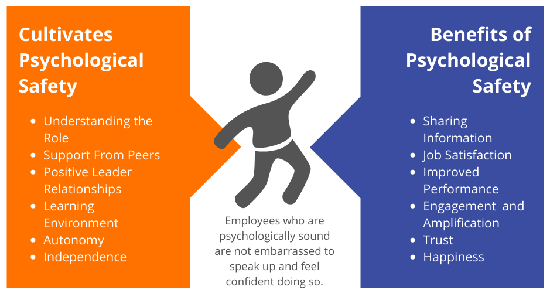
Leaders can play a major role in creating a psychologically safe company culture by learning each team member’s job and instilling a sense of purpose in that role. Additional strategies for creating this type of culture include one-on-one reviews after each major project and regular meetings with peers. These measures are critical for providing team members with a sense of belonging and empowerment.
How to Change Your Company Culture and Adapt
You have the opportunity to answer the question, “What is your company culture?” once you accept the need for those changes. This process often begins with refining your company's mission, goals, and values, both for the short and long term. The goals and values of specific departments often need to be defined in greater detail to account for their differing roles.
While employees don't bring a company's culture with them, they still play a role in shaping it. This fact requires leaders to assess their company culture regularly for signs that employees are dissatisfied with the way the company is now or where it's going. Fortunately, answering the question, “What does company culture mean?” doesn't require you to assess all aspects of your company's culture at once; you can focus on a few areas at a time to get a sense of the atmosphere in your workplace.
Clarity of Direction Through Communication
What is company culture? And what is it to your organization? Leaders must clearly communicate the direction they plan to take their company. However, employees must also support this direction, rather than merely having it dictated to them. They must feel that what they do matters and will have a measurable impact on the company's success.
Active Employee Engagement
Active employee engagement requires you to properly answer the question “Why is culture important?” For example, operational inefficiencies create distractions that cause employees to feel they aren't empowered to fulfill their duties. This situation is one of the most common causes of engagement problems.
GaggleAMP’s employee advocacy platform fosters employee engagement by allowing them to share content with prospects and current customers. It also allows marketers to track their return on investment (ROI) in social media by leveraging a group of people through a Gaggle or network. Gaggle members are thus able to amplify social media messages and distribute them across social networks such as Facebook, LinkedIn, and Twitter.
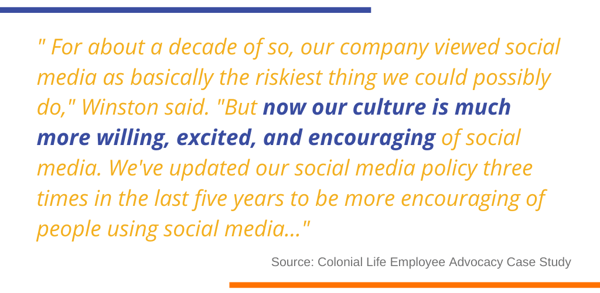
Colonial Life provides a case study on how GaggleAMP is able to improve sales through greater employee engagement. Chris Winston, Director of Corporate Communications at Colonial Life, was trying to increase his company's social media activity in 2015. Colonial Life had a very restrictive social media policy at that time due to concerns over regulatory compliance, which Winston was working to change. Four years after implementing GaggleAMP, salespeople using this platform have at least doubled their average sales growth.
"Successful salespeople know that they need to be engaging on social media, and that's why they're on GaggleAMP," Winston said.
Radical Transparency for Fostering Trust
Trust is absolutely critical for answering the question, “What does company culture mean?” Working in a place where you don't necessarily expect coworkers to pull their own weight makes it impossible to do your best at your own job. Background checks and related practices are certainly useful for hiring people who seem trustworthy, but actually making trust a company value is the clear responsibility of the business owner. This process requires company leaders to create as much transparency as possible in their policies and practices.
Continued Learning & Employee Investment
Continuing improvement is another essential requirement for answering the question, “What is company culture?” A culture of learning allows team members to take full advantage of the tools and other resources that a company provides. It also helps ensure that the company’s library remains current and relevant.
Culture is Currency
Company culture is incredibly important for drawing in top job applicants and minimizing employee turnover. It also builds a reputation outside of your organization that your company is a great place to work and aids in talent pool development.
People work for multiple companies throughout their lives, so when they work somewhere that has a great workplace culture, they value that and don’t want to give that up. And if they’re looking to leave a job they don’t like, they’ll be drawn to an organization they heard is a great place to work. And companies with happy employees outperform the competition by 20%, according to Growth Everywhere. Patty McCord, the iconic former chief talent officer at Netflix, famously discussed culture in her TED talk. Curious about what happens when you build a company people enjoy working for and trust over mandated policies, she did just that. She understood the growth that can and does occur when you trust more and control less.
Patty McCord, the iconic former chief talent officer at Netflix, famously discussed culture in her TED talk. Curious about what happens when you build a company people enjoy working for and trust over mandated policies, she did just that. She understood the growth that can and does occur when you trust more and control less.
Make it Easier to Adapt
The best leaders focus on building a strong team with sustainable workplace culture. This is why you want to keep your company culture in mind when hiring and onboarding. This strategy makes it much easier to adapt to the changes that will inevitably affect your company.
It makes complete sense to have employees who are good judges of your culture interview job applicants. They will be able to get a sense of whether the applicant would be a good cultural fit. Hiring capable people who fit your company culture eliminates the need to worry about how they’ll fit into your company’s structure.
It also makes transitioning new employees into the workplace easier for them. When an employee feels the company culture is warm and accepting, it reduces the unnerving feeling when you start a new role. New employees also feel better supported and are more likely to ask questions they are unsure about.
Request a Live Demo!
GaggleAMP focuses exclusively on keeping your employees, partners, and stakeholders engaged in driving your business forward. Our platform does this by encouraging employees to share content with prospects and current customers, thereby boosting reach, engagement, and the employees' network. Learn more about how GaggleAMP works by scheduling a demo today.











